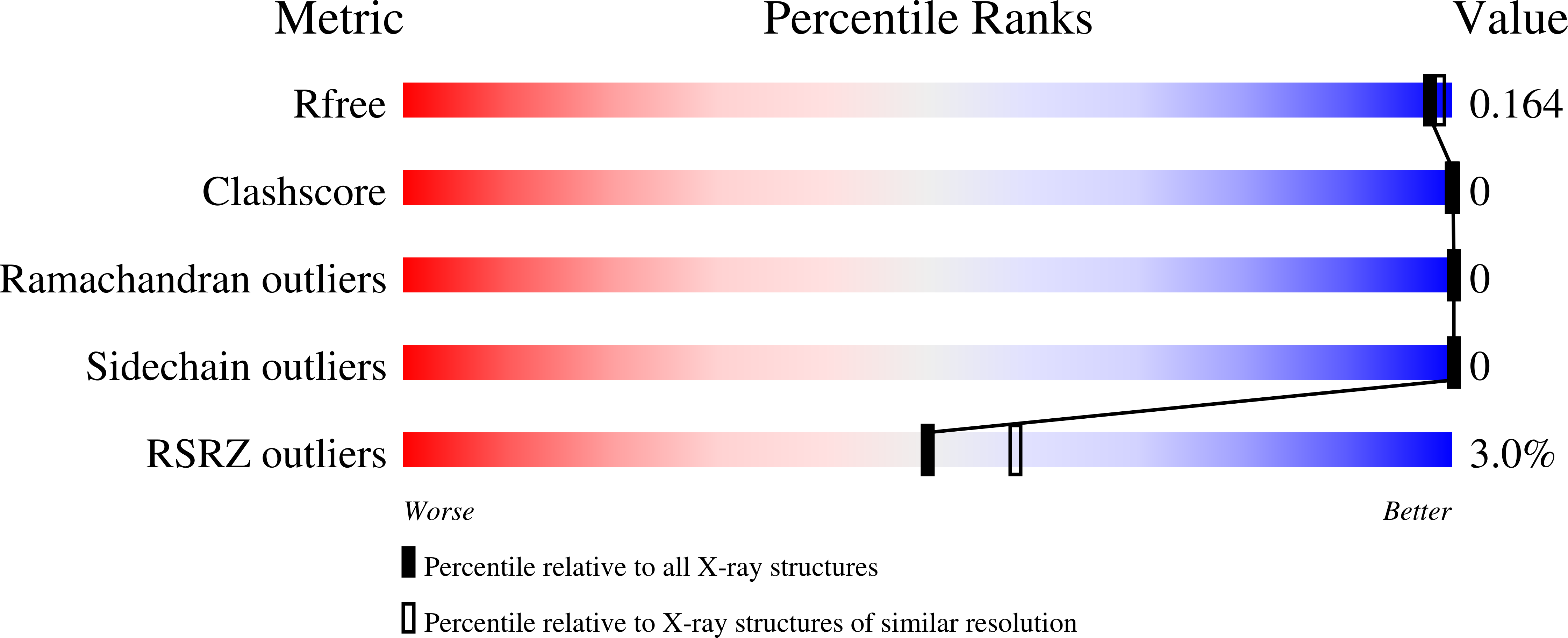Distinct EH domains of the endocytic TPLATE complex confer lipid and protein binding.
Yperman, K., Papageorgiou, A.C., Merceron, R., De Munck, S., Bloch, Y., Eeckhout, D., Jiang, Q., Tack, P., Grigoryan, R., Evangelidis, T., Van Leene, J., Vincze, L., Vandenabeele, P., Vanhaecke, F., Potocky, M., De Jaeger, G., Savvides, S.N., Tripsianes, K., Pleskot, R., Van Damme, D.(2021) Nat Commun 12: 3050-3050
- PubMed: 34031427
- DOI: https://doi.org/10.1038/s41467-021-23314-6
- Primary Citation of Related Structures:
6YET, 6YEU, 6YIG - PubMed Abstract:
Clathrin-mediated endocytosis (CME) is the gatekeeper of the plasma membrane. In contrast to animals and yeasts, CME in plants depends on the TPLATE complex (TPC), an evolutionary ancient adaptor complex. However, the mechanistic contribution of the individual TPC subunits to plant CME remains elusive. In this study, we used a multidisciplinary approach to elucidate the structural and functional roles of the evolutionary conserved N-terminal Eps15 homology (EH) domains of the TPC subunit AtEH1/Pan1. By integrating high-resolution structural information obtained by X-ray crystallography and NMR spectroscopy with all-atom molecular dynamics simulations, we provide structural insight into the function of both EH domains. Both domains bind phosphatidic acid with a different strength, and only the second domain binds phosphatidylinositol 4,5-bisphosphate. Unbiased peptidome profiling by mass-spectrometry revealed that the first EH domain preferentially interacts with the double N-terminal NPF motif of a previously unidentified TPC interactor, the integral membrane protein Secretory Carrier Membrane Protein 5 (SCAMP5). Furthermore, we show that AtEH/Pan1 proteins control the internalization of SCAMP5 via this double NPF peptide interaction motif. Collectively, our structural and functional studies reveal distinct but complementary roles of the EH domains of AtEH/Pan1 in plant CME and connect the internalization of SCAMP5 to the TPLATE complex.
Organizational Affiliation:
Department of Plant Biotechnology and Bioinformatics, Ghent University, Ghent, Belgium.




















